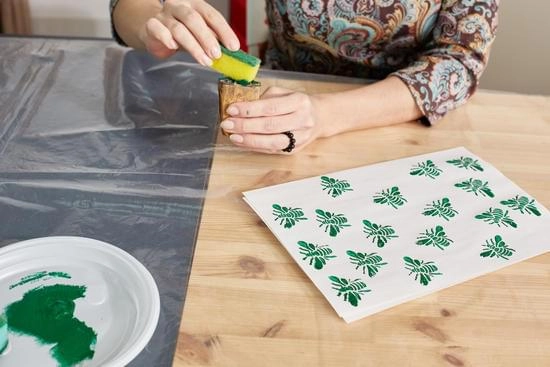The guide to caring for your hand-carved wood block printing blocks
Wooden printing blocks are an investment in a rewarding art form. To ensure your hand carved wooden printing blocks deliver crisp, beautiful results for years, proper care is essential. This guide covers everything you need to know about cleaning and storing your blocks, which are crafted from sustainable Sheesham (Indian Rosewood) and treated with mustard oil for maximum durability.
The foundation: mustard oil & durability
Our hand-carved printing blocks are dipped in natural mustard oil, a traditional practice that significantly reduces the wood's natural tendency to absorb water. This preparation makes your wooden printing blocks highly resistant to swelling and cracking, securing them for a lifetime of creative use.
The Golden Rule of Printing: The Dabbing Technique
This is the most critical instruction for preserving the fine detail on your hand carved printing blocks.
Always Dab, Never Swipe
When applying paint or ink, it is vital to dab the pigment onto the block's raised surface using a soft sponge. Swiping or brushing pushes color down into the delicate, carved channels. Over time, this pigment residue dries, clogs the minute details, and results in prints that are blurry or lack definition. By using a gentle dabbing technique, you keep the carved grooves clean, ensuring your prints remain sharp and beautiful.
Cleaning Your Wooden printing blocks: Ink and Water Safety
Understanding your ink type is key to effective cleaning and preserving your hand carved wooden printing blocks.
Method A: Quick-Change Wipe (During a Session)
If you are changing colors and returning to the block soon, use a quick, dry method: Use a rough cloth or old towel to gently wipe the excess, wet pigment from the block’s surface.
Method B: End-of-Session Deep Clean
This method is necessary to remove residual ink and oil, preventing the wood from cracking or the details from clogging.
Step 1 Use Hot Water & Soap
Fill a basin with hot water and a few drops of mild dish soap. The heat helps dissolve the binding agents in the ink and any oil-based residue.
Tip for Oil-Based Ink: for traditional oil-based relief printing inks, you may need a small amount of mineral spirits for the initial wipe, but always rinse immediately with soap and water.
Step 2 Gentle Scrub
Use an old, soft-bristled toothbrush to gently scrub the block’s surface and details. Focus on lifting the pigment, not driving it deeper.
Step 3 Warning! Do not soak
Never keep the block immersed in water for more than five minutes. Prolonged soaking will cause the wood to expand and drastically increase the risk of warping or cracking.
Step 4 Rinse & Inspect
Give the block a quick rinse and check that the fine details are clear. If any old pigment remains, a toothpick or fine needle can be used to gently scrape the dried material before the wood fully dries.
Long-Term Care and Storage for Carved Printing Blocks
These steps ensure your cherished wood block printing tools are protected for the long haul.
- Dry in the Shade Only : After washing, pat the block dry with a towel. Then, set it aside to air dry completely in the shade.
- Avoid Direct Sunlight: Rapid, uneven drying caused by strong, direct sunlight is a leading cause of cracking and warping in wood. Protect your blocks from this extreme change.
- Keep Them Dry and Stable: Store your blocks away from humidity. Avoid high-humidity locations like basements, utility rooms, or near vents.
- Ideal Storage: Store your sheesham wood blocks flat on a shelf or in a cabinet where the temperature and moisture levels are stable.
Conclusion
By following these simple care instructions, your investment in quality hand made wooden printing blocks - made from durable, beautiful sheesham - will continue to reward you with crisp, professional prints for decades to come.


